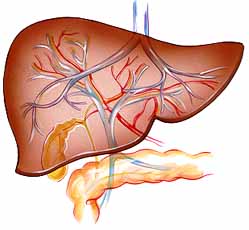Liver
Enzyme Elevations in HIV Positive Individuals with Occult Hepatitis B Virus Infection
 The
clinical significance of occult hepatitis B virus (HBV)
infection -- that is, the presence of HBV DNA in individuals with HBV core
antibodies (anti-HBc) in the absence of HBV surface antigen (HBsAg) -- is unclear
in HIV positive patients, and thus it is uncertain
whether low-level HBV needs to be detected and treated in this population. The
clinical significance of occult hepatitis B virus (HBV)
infection -- that is, the presence of HBV DNA in individuals with HBV core
antibodies (anti-HBc) in the absence of HBV surface antigen (HBsAg) -- is unclear
in HIV positive patients, and thus it is uncertain
whether low-level HBV needs to be detected and treated in this population.
As
described in the September 2008 Journal of Clinical Virology, Vincent Lo
Re and colleagues from the University of Pennsylvania School of Medicine conducted
a study to determine if HIV positive individuals with occult HBV infection have
an increased incidence of liver enzyme elevation.
Elevated
alanine and aspartate transaminase (ALT and AST, respectively) -- sometimes known
as "transaminitis" -- is an indicator of liver inflammation, which may
signal hepatitis B or C
disease progression, drug-induced liver toxicity, or other liver problems.
This
cohort study included 97 randomly selected HIV positive patients in the Penn CFAR
Database and Specimen Repository who were HBsAg negative and anti-HBc positive.
HBV DNA was qualitatively detected using a transcription-mediated amplification
assay. Liver transaminase levels were measured at 6 month intervals from the time
of occult HBV determination.
Results
•
Among the 97 randomly selected participants without elevated transaminase levels
at baseline, 13 (13%) had occult HBV.
•
These patients more frequently had detectable HIV RNA.
•
The 2-year incidence of elevated liver enzymes among HIV-infected participants
with occult HBV was not significantly different from that of patients without
occult HBV (50 vs 38 events per 100 person-years, respectively; adjusted incidence
rate ratio 1.36).
Based
on these findings, the investigators concluded, "Occult HBV did not increase
the incidence of hepatic transaminitis over 2 years."
They added that,
"Future studies should determine whether occult HBV is associated with other
clinically important outcomes, particularly hepatocellular
carcinoma."
Division of Infectious Diseases, University of
Pennsylvania School of Medicine, Philadelphia, PA; Department of Biostatistics
and Epidemiology, Center for Clinical Epidemiology and Biostatistics, University
of Pennsylvania School of Medicine, Philadelphia, PA; Center for Education and
Research on Therapeutics, University of Pennsylvania School of Medicine, Philadelphia,
PA.
 10/17/08 10/17/08
Reference
V
Lo Re, B Wertheimer, AR Localio, and others. Incidence of transaminitis among
HIV-infected patients with occult hepatitis B. Journal of Clinical Virology
43(1): 32-36. September 2008. (Abstract).
|
|
|
FDA-approved
Therapies for Chronic HBV Infection |
|
| Protease
Inhibitors | | Nucleoside
/ Nucleotide Reverse Transcriptase Inhibitors | | non
Nucleoside Reverse
Transcriptase Inhibitors
| | Entry
Inhibitors
(including Fusion Inhibitors) | | Fixed-dose
Combinations | | Atripla
(efavirenz + emtricitabine + tenofovir) Combivir
(zidovudine + lamivudine)Trizivir
(abacavir + zidovudine + lamivudine)Truvada
(tenofovir + emtricitabine) |
| Integrase
Inhibitor | | | |

 The
clinical significance of
The
clinical significance of